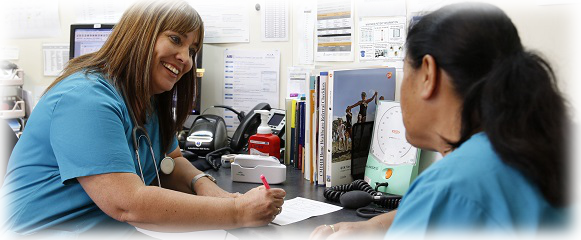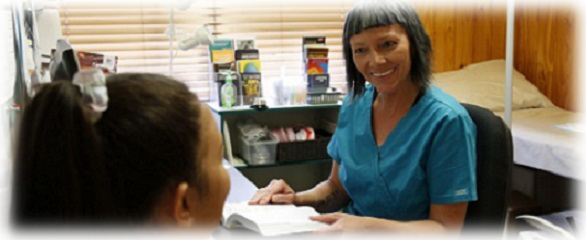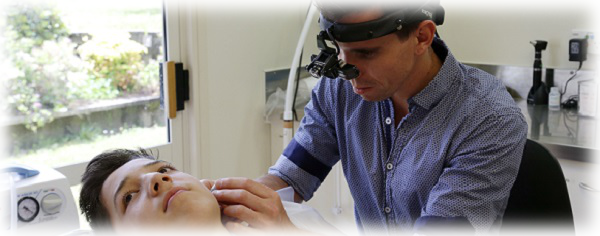July 2014
Welcome again to the Millhouse Community and other readers.
Winter
We are experiencing a winter of contrasts, warm days and cold nights interspersed with the blustery cold chilling winds that hasten the onset of colds and influenza.
Remember to avoid the cold, dress snugly and consume warm food and drinks.
Have you
taken Vitamin D to help prevent infection?
Vitamin D - adults 4000-5000 units daily, that is cholecalciferol 50, 000 unit tab 2 weekly; child vitamin D drops are available at 128 Reception, cost $37.00.
Are you using hygienic hand cleansing practices? Consider wearing gloves to prevent skin contamination and avoid people with coughs and colds.
Don't go to
work or send your children to day-care or school when unwell. It is better to stay home and recuperate than struggle on and possibly infect others.
Don't forget to use the spice turmeric (1/2 tsp powder 2-4x day with water, milk or yoghurt) that has anti-inflammatory and immune stimulating effects when cold and flu symptoms appear. Turmeric can also be combined with ginger and small amount of cayenne powder.
In this issue...
- Winter Reminders
- At Risk Individual Programme
- Texts for normal lab results
- Appointments
- Women's Health
and this month Dr Ric writes about the importance of microorganisms in the human gut
Millhouse News
At-Risk-Individual programme commenced July 1.
As I mentioned in the last newsletter, Counties Manukau Health has revamped the existing chronic care programmes, which have been ineffective in reducing hospital admissions and delaying disease complications, into the At Risk Individual (ARI) programme
ARI programme aims to:
Decrease hospital admissions through improved healthcare.
Prevent, detect and treat those with imminent disease.
Develop electronic patient 'care-plan' to coordinate improved care treatment between hospital and primary healthcare.
Encourage patients to be proactively involved in their treatment and undertake lifestyle changes to improve health
The ARI aims to target those with significant illness to prevent hospital admission and readmission (similar to CCM) and focus on those at risk of imminent disease who are willing to participate in lifestyle changes to improve their health. The programme will be led by our practice nurse team who, in collaboration with your doctor, will coordinate the development of the patient 'care plan' and 'health goals'.
CCM and CarePlus are being gradually discontinued and we will discuss with you whether enrolment in the ARI programme might improve your health and wellbeing. A hallmark of the programme is a willingness of participants to be actively involved in medical therapy and make proactive lifestyle changes.
Learn more about this...
Laboratory Results
We are trialling TEXT messages for 'NORMAL' blood and radiology results rather than emailing a full report. We hope this will reduce practice nurse time in answering phone calls about investigations.
Did Not Arrive Appointments
We are still experiencing a few patients who have booked and are not turning up for their consultation. Please inform Reception as early as possible if you cannot attend so your appointment can be given to another who may have an urgent medical need.
E-appointments
E-appointments are an easy and convenient way to book an appointment on line atwww.millhousemedical.co.nz/e_booking allowing you to select your doctor and the appointment time. Give it a go if you haven't already done so.
Cervical Smears and Well-Woman's examination
Remember our practice nurses are available for cervical smear and well woman's examination; their consultation fee is less than a doctor's charge. Make an appointment to see the practice nurse through reception.
Learn more about this...
The Gastrointestinal Microbiome
For the next few newsletters I will discuss the importance of the gut microorganisms (also called the microbiome or microbiota) which consist of a staggering 100 trillion microbes, mainly bacteria, from 160 common species out of a possible 1000 different groups, that inhabit the gastrointestinal tract from the mouth to the anus.
Traditional folk medicine has always advocated that physical vigour and long life are due to the microscopic life of a healthy gut that is nourished by a diet rich in variety, fresh and wholesome, including fermented foods, lots of vegetables, nuts, seeds, spices and fruit in season. Modern medicine has been slow to recognise the importance of a healthy gastrointestinal microbiome, even though the lone voice of Professor Eli Metchnikoff over 100 years ago had suggested that ageing was caused by toxic bacteria in the gut, and that lactic acid could prolong life.
In recent years DNA fingerprinting of bacteria is allowing precise microorganism dentification and has stimulated increased research into the relationship between noxious gastrointestinal bugs and inflammatory diseases throughout the body.
Childhood obesity, the gut microbiome and vaginal bacteria
The NZ Herald, 14 June 2014, carried a headline 'Childhood obesity researchers discover link with caesarean births'. The article quoted visiting Professor Matthew Gillman, who with colleagues at Boston's Children's Hospital (USA) had found that babies born by Caesarean section were at greater risk of obesity at age three, placing them at long-term risk of developing diabetes and heart disease. Gillman suggested that C-section babies have fewer intestinal bacteria, compared with children delivered vaginally who gathered the tiny organisms as the baby travelled through the mother's birth canal, and that this might be one reason for their weight gain. In 2012, one third of all Auckland births were by C-section.
Increase immunity in pregnancy & infancy by:
1. Consuming a wholesome diet -that is fresh, has variety and avoids all sugar and refined starch foods.
2.
Supplementing with a multivitamin supplement with iodine during pregnancy and breast feeding. The minerals iron and zinc are important.
3. Adding lactic acid-producing bacteria - Inner Health Eczema Shield contains lactobacillus rhamnosus that appears to lower risk of infant eczema and asthma.
4. Breast feeding as long as possible. At the very least provide colostrum to baby during the first 3-4 days after birth which is rich in protein and antibodies.
Breast milk has many immune enriching substances - numerous species of beneficial bacteria & oligosaccharides that feed them, immunoglobulins, antibodies, lactoferrin & anti-bug fatty acids.
5. Consuming coconut oil for its antiviral, antibacterial & antifungal protective fatty acids.
6. Taking additional Vitamin D in pregnancy and while breast feeding – enhances the immune system, bone & nervous system development.
7. Consider swabbing C-Section new-borns
with mother's vaginal secretions to improve immunity.
The origin of the baby's immune system
During the last weeks of pregnancy mother's vaginal secretions are enriched with glycogen, a multiple branching glucose molecule that selectively feeds a community of specific lactic acid-producing bacteria which prevent other bugs from ascending the birth canal. When a baby is born vaginally, it is coated in a slightly-acid protective microbial soup, the first new life forms that the baby encounters.
Other changes taking place that provide the new-born with a protective community of microbes are colonies of bifidobacteria, also lactic acid-producing, that develop deep in the mother's nipples. These bacteria pass out in the breast milk as a starter culture for the infant gut. In mice, and we presume in humans, white blood cells transport the bifidobacteria from mother's gut, where they grow in abundance, to her breast. Breast milk also contains up to two hundred specific sugars, called oligosaccharides, that the baby cannot digest, but which provide food for the multiplying bifidobacteria.
Finnish researchers have shown that C-section babies at four weeks after birth had not acquired the bifidobacteria or lactobacillus that are found after a few days in the gut of natural born babies. At six months the specific bacteria, Bacteriodes fragillus (see below, thin mice studies), in C-section babies was 50% less, and another study suggested lasting disturbances of the microbiome may persist for up to seven years.
C-section babies are also colonised by skin bacteria from doctors and nurses, putting them at greater risk of acquiring hospital pathogenic bugs and receiving antibiotics that also undermine the developing gut immune system.
It won't surprise you to learn that not just childhood obesity is increased in C-section children but also Type 1 insulin-dependent diabetes, asthma and food allergy.
Human bacteria make mice fat
In 2013 the results of a fascinating experiment were published. Drs Geoffrey Gordon, Vanessa Ridaura and colleagues, from Washington University in St Louis, transplanted faecal bacteria from human twins into mice. They chose female twins who exhibited 'discordant' weight profiles - one was overweight and one was slim. The mice, who originally had no natural gut bacteria, were transplanted with either the obese or slim person's bacteria; after two weeks, mice that received faecal bacteria from the overweight human began putting on weight, whereas mice with bacteria from the slim twin did not. The new microbes in the gut were clearly different and influenced the likelihood of mouse weight gain.
The researchers also wondered what would happen if they housed both samples of mice in the same cage, since these animals are known to eat faecal droppings. Cross contamination of faecal bacteria did occur, but had an effect only in one direction; the 'obese twin' mice that were overweight became thinner in presence of 'slim twin' bacteria. The protective 'slim twin' bacteria come from the family called Bacteroidales; the species Bacteriodes fragillus is the one often deficient in C-section babies. When the researchers manipulated the mouse diets, and replaced the basic mouse chow, low in fat and rich in plant polysaccharides, with pellets reflecting a Western Diet (high fat, low fruit & vegetables) the beneficial effect of the presence of these bacteria was no longer seen.
Conclusion
Our gastrointestinal immunity begins with inoculation from vaginal secretions and our mother's breast milk. It is nourished by healthy foods and destroyed by the refined food western diet and antibiotics. If we respect the 100 trillion microorganisms that live in our gut they will go on to provide us with health and longevity.
Reference:
V.K.Ridaura et al Gut Microbiota from Twins Discordant for Obesity Modulate Metabolism in Mice. Science. Sep 5 2013
Yours in good health,
Dr Richard J Coleman
Download a PDF of this newsletter






